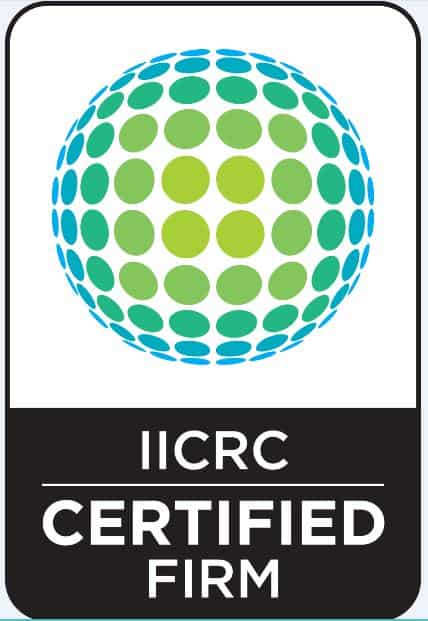Whether it was a plumbing failure, broken appliance or torrential rainfall, the basement flooded. What to do next depends on so many factors. You need to take action now.
Water damage in a flooded basement creates immediate problems. The risk of a compromised electrical system is just one example. Long-term concerns include your home’s structural integrity.
Knowing what to do when the basement floods makes all the difference, but you have to proceed as safely as possible.
Read on.
Key Takeaways
- In the event of a basement flood, start by shutting down utilities if it’s safe to do so. Next, identify the flood source, contact your insurance company, assess the extent of the damager, and retrieve salvageable belongings.
- The restoration process involves extracting water, drying the area, cleaning and sanitizing surfaces, and documenting damages for insurance claims. Be vigilant for secondary issues like mold or structural damage post-cleanup. Hire a professional restoration company such as ServiceMaster of Lake Shore to address the water damage: 312-707-8597
- Implement preventive measures such as regular inspections of sump pumps, appliance hoses, and basement windows. Ensure proper exterior drainage to avoid future flooding. Regular maintenance can significantly reduce the risk of basement flooding.
Why Do Basements Flood?

Basements are built partially or entirely underground, with solid concrete walls and floors. When water gets into the downstairs, that combination turns a basement into an oversized catch basin.
These are the most common causes of basement flooding.
- A washing machine breakdown floods the basement.
- The tank in a basement water heater cracks and leaks.
- Old plumbing components come loose or rupture.
- Frozen pipes burst and fill the basement with water.
- Clogged gutters push rainwater down into wall voids.
- Sump pump failure allows water to accumulate in the basement.
- Foundation settling causes basement walls to crack.
- Storm flooding saturates the ground, causing foundation leaks.
- Sewer line blockage pushes Category 3 water into the basement.
7 Steps to Take Immediately After the Basement Floods

1. Shut Down the Utilities
Before you head to the flooded basement, turn off the electricity downstairs at the breaker box. If the box is located in the basement, call a licensed electrician. Don’t take any chances.
If you detect the odor of gas, leave the house immediately, and call your municipal or private utility company. Their technicians will address the situation. Don’t go back inside until they give you the all clear.
2. Identify the Flood Source
If the water in your basement is the result of storm flooding or a sewer backup, don’t go downstairs. Both types of basement flooding expose you to highly contaminated Category 3 water.
Let certified water damage professionals take care of the flooded basement.
More often, flooding in the basement is caused by a plumbing problem. After you’ve shut down the utilities, investigate the downstairs for signs of leaking pipes or broken appliances, and take care of repairs.
If it’s not something you can handle by yourself, call a licensed plumber right away.
3. Contact Your Insurance Company
Most homeowners insurance policies cover basement flooding that results from plumbing breakdowns. Contact your agent, explain the situation, and ask to schedule an adjuster’s inspection as soon as possible.
Standard insurance policies don’t cover water damage in the basement caused by a natural event. If you have coverage through the National Flood Insurance Program, call your insurance company, and start the claims process.
4. Assess How Much You Can Do
If you’re using the basement for storage, you’ll want to save as many things as possible. However, be realistic about how much you can do on your own. This applies to general cleanup and repairing damages too.
Consider calling an experienced water damage restoration company. It’s quicker and easier to let certified technicians take care of basement flooding.
An experienced restoration company can also help you navigate the insurance claims process.
5. Check Your Protective Gear
The damp environment in a flooded basement creates an unhealthy atmosphere. Air quality is compromised by rapidly spreading mold spores. Wet floors and debris pose dangerous slipping hazards.
Put your personal safety first. Before heading downstairs, protect yourself with the following PPE.
- An OSHA-compliant respirator
- Wrap-around plastic goggles
- Heavy work gloves
- Hip or chest waders
- Waterproof work boots
6. Retrieve Salvageable Belongings
After suiting up in your protective gear, transfer salvageable items upstairs. Soft goods, such as clothing and bedding, can often be cleaned and restored. Work carefully, especially as you move up and down the stairs.
Wet cardboard boxes are prone to tearing, so handle them with caution.
Store retrieved items in a dry area, preferably a room with windows. Spread things out as best you can, open the windows, and turn on fans to circulate fresh air. Give everything at least several days to completely dry.
7. Prep for Basement Cleanup
If you decide to go ahead with DIY basement cleanup, you’ll need a submersible water pump, large wet vac and high-capacity dehumidifier. This usually requires a trip to a home improvement store’s rental center.
Speak with store staff about how to safely operate the equipment in a wet basement. If you have any second thoughts about doing it yourself, call in water damage professionals.
How to Clean Your Basement After It Floods

Before you get started on DIY flooded basement cleanup, perform one more safety check. Make sure there aren’t any electrical hazards, and double-check the floor for tripping hazards.
When you’re sure the area is safe, suit up in your PPE.
- Extract Standing Water – Remove standing water in the basement with a submersible pump. Follow up with a wet vac, or use a mop and buckets.
- Dry the Wet Basement – Run large fans and a dehumidifier 24/7 for several days. If the weather permits, increase fresh air circulation by opening basement windows.
- Clean and Sanitize – Scrub all surfaces, including walls and floors. Use a bleach-based cleaner to disinfect and deodorize non-porous surfaces. Wipe down porous surfaces with a cellulose sponge and a mild cleaning solution.
- Document Your Losses – As you work, document the basement water damage by taking pictures of everything, including ruined contents. Use these photos to support your insurance claim for losses.
- Follow Up With Inspections – Basement flooding can cause secondary damages that aren’t obvious for several days or weeks. Stay on the lookout for structural problems, mold outbreaks and signs of plumbing leaks.
How to Prevent Basement Flooding
- Inspect the basement sump pump and floor drain regularly and especially after heavy storms.
- Be ready for weather emergencies and power outages with a battery-powered backup pump.
- Check appliance hoses and connections for signs of wear, and replace them every three to five years.
- Protect basement windows with acrylic covers, and keep window well drains clear of debris.
- Routinely check for and repair exterior foundation problems and interior cracks in basement walls.
- Keep gutters free of clogs, and make sure downspouts direct rain and snowmelts away from the foundation.
- Grade lawns, or install French drains so that water doesn’t accumulate around foundation walls.
Has Your Basement Flooded in Chicago, IL, or Suburbs? We Can Help!

When a basement floods, the problems add up fast. From water extraction and structural drying to recovering personal belongings, it’s more than most homeowners can handle.
We understand. ServiceMaster of Lake Shore is standing by, ready to help. Our water damage expertise includes cleaning, disinfecting and restoring flooded basements in Chicago homes and businesses.
You don’t have to deal with basement flooding by yourself. Let our industry-certified technicians take care of the hard work. We’re here for you 24/7, and we’re just a phone call away: 312-707-8597.
FAQs
Will homeowners insurance cover basement flooding?
In most situations, yes. Homeowners insurance covers water damage in a flooded basement that results from plumbing problems. Coverage for storm flooding in the basement requires a separate policy available through the National Flood Insurance Program.
How much does it cost to clean up a flooded basement?
The cost of cleaning up after basement flooding depends on the extent and type of damage. The cost can range from $2,000 to $7,000. Category 3 water cleanup can cost significantly more.
How long does it take for a flooded basement to dry out?
Drying out a basement after minor flooding can take several days to a week. Extensive basement flooding may require up to six weeks to completely dry. Our teams use industry-grade air moving equipment to speed up the process.






